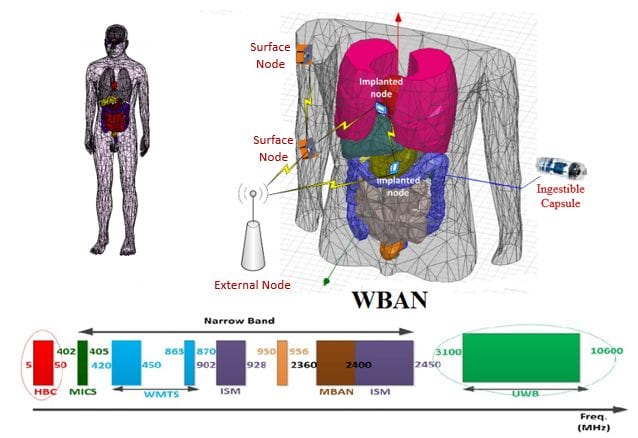About Me

Mac Gray
Electrical Engineerng
My name is Mac Gray, I am a third year studying Electrical Engineering and minoring in Computer Science. I had never worked with antennas prior to this project however after doing research and investigations I now have a deeper interest in the field.
Acknowledgements
I would like to thank the College of Engineering for this great opportunity to learn through SURP. I would also like to thank Dr. Bob Crockett for organizing SURP to make it possible especially during a time like this. Finally, I would like to thank Dr. Mona El Helbawy, the project advisor, for assisting my learning and giving me tips and structure for how to improve my technical skills.
The Wireless Body Area Network (WBAN) Research Project
Introduction
- A Wireless Body Area Network (WBAN) is a wireless network comprised of low power devices (nodes) that may be implanted in, mounted on, or placed in close proximity to the human body.
- Applications of WBANs include healthcare, sports and fitness, military and public safety.
Design Requirements
- The key design requirements for WBAN nodes include: small size, reliability, wireless communication ability, and low power consumption.
Antenna design is essential for the reliability of communication of a WBAN. The shape and size of a WBAN antenna depends on the location of the node and on the radio technology used for transmission.
Challenges: Operation in and/or in close proximity to the human body brings several challenges:
-
- Antenna characteristics such as input impedance, resonant frequency and radiation pattern are affected by the presence of the human body and other factors such as the person’s weight, age, skin type, and posture [3].
- The dielectric properties of human body tissues are dependent on the operating frequency.
Another important design requirement is the Specific Absorption Rate (SAR). The Federal Communications Commission (FCC) recommends a maximum SAR value of 1.6 W/kg averaged over a 1g of human body tissue. SAR values above the prescribed FCC limit can lead to considerable tissue heating and damage [4].
Specific Absorption Rate (SAR)
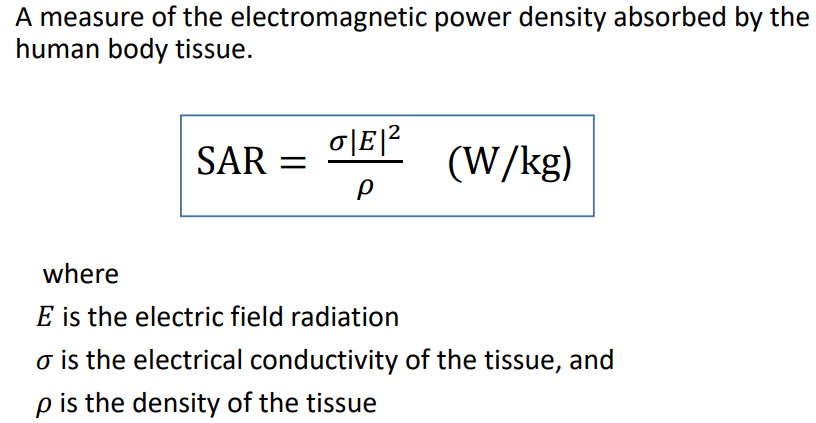
UWB Channel Modeling
Path Loss Model
The path loss model provides necessary knowledge of signal attenuation as it propagates from the transmitting antenna to the receiving antenna [5].

Power Delay Profile
- The environment in which the signal transmission takes place affects wave propagation. Scattering from nearby objects causes multipath propagation.
- In multipath propagation, the power delay profile (PDP) represents the received signal average power in terms of delay with respect to the first arrival path [6].
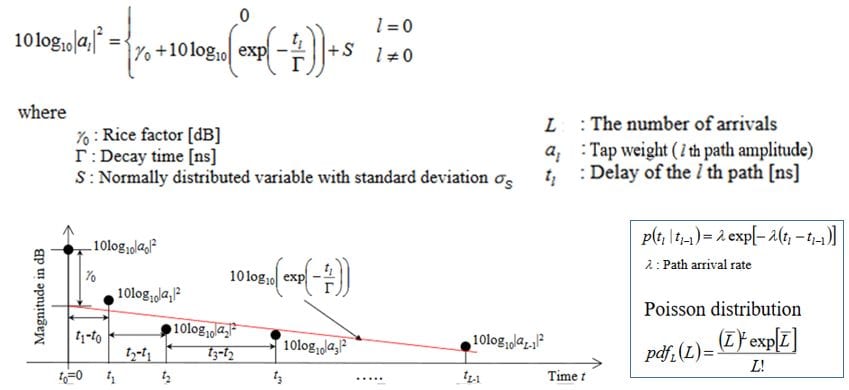
Simulation Methods
- WBAN channel simulation methods include: (1) Asymptotic techniques such as ray tracing (RT) and Uniform Theory of Diffraction (UTD); and (2) Full-wave numerical techniques such as the Method of Moments (MoM), Finite Element Method (FEM), Finite-Difference Time-Domain (FDTD), and Finite Integration Technique (FIT).
- Each method has its own advantages and disadvantages, based on the simulation model, size, and operating frequency.
- Performing full-wave numerical simulations at millimeter wave frequencies can be computationally very demanding.
The IEEE 802.15.6 Standard
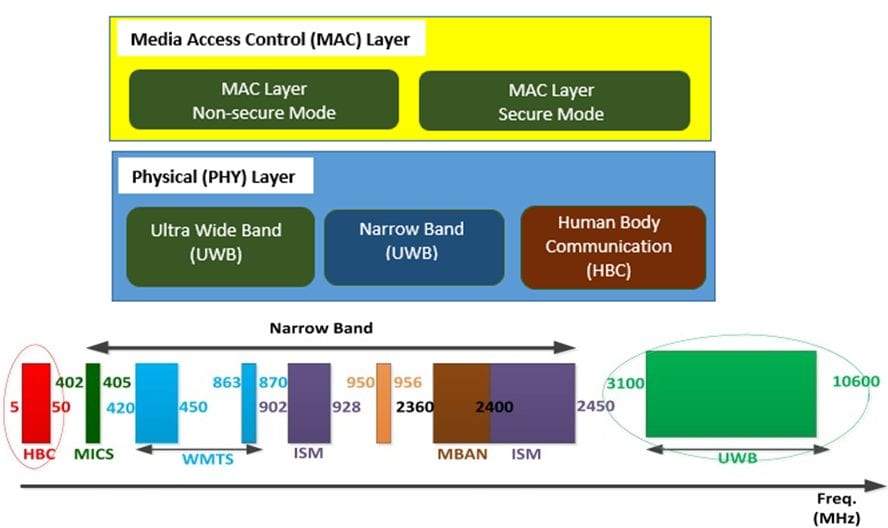
- The standard establishes specifications for the Physical (PHY) and Media Access Control (MAC) Layers for WBANs.
- Conformance with the IEEE 802.15.6 standard can maximize the flexibility and applicability of WBAN products and systems.
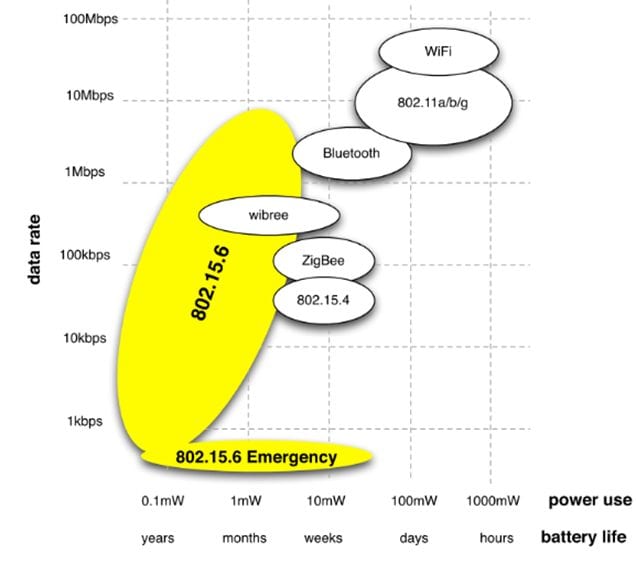
WBAN enabling standards; data rate vs. battery life [11].
2020 Summer Undergraduate Research Symposium

Dr. Mona El Helbawy (Advisor) and Mac Gray (Student)
Department of Electrical Engineering, Cal Poly San Luis Obispo
IEEE Channel Models
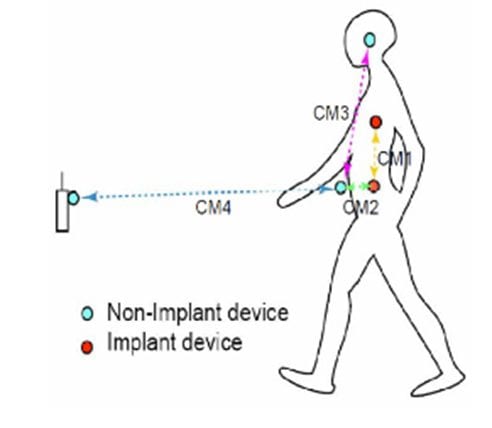
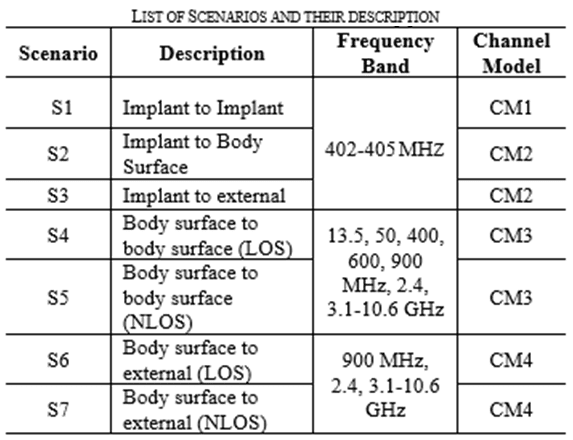
- The IEEE 802.15.6 standard [1] identified three different BAN node types based on their physical position: (1) Implant node: placed inside the human body, immediately below the skin or deeper inside the body tissue; (2) Body surface node: placed on the surface of the human skin; and (3) External node: not in contact with human skin.
- A number of scenarios were identified in the standard based on the communication link, the frequency of interest, and on whether there is a Line-of-Sight (LOS) or Non-Line-of-Sight (NLOS) between the BAN nodes.
- The scenarios were grouped into categories that may be represented by the same channel model (CM) as described in Table 1 above. However, the standard does not provide exact specifications for the performance of those channel models. Specifications for a channel model performance is application dependent.
- WBAN Communication links can be divided into three categories: on-body, off-body, and in-body.
- The on-body link describes communication between two body surface nodes.
- The off-body link describes communication between a body surface node and an external node.
- The in-body link is used to describe communication involving at least one implant node, i.e., communication between two implant nodes, between one implant node and a body surface node, or between an implant node and an external node.
- The received signal can significantly vary depending on the link under study.
On-Body Measurements
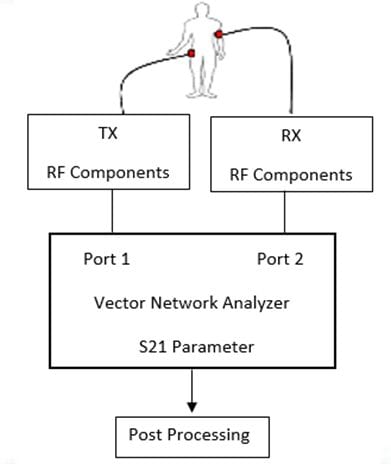
- Channel characterization using measurements is typically performed using a vector network analyzer (VNA) to measure S21 parameter.
- The S21 parameter represents the channel transfer function or channel response in the frequency domain.
- Post Processing involves techniques such as windowing the recorded channel response to improve the time domain dynamic range.
- The windowed frequency response is then converted to the time domain using inverse Fourier transform (IDFT) to obtain the channel impulse response (CIR) [7].
Computational Body Models
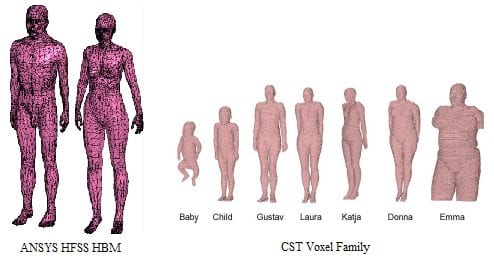
- The electrical properties of the human muscles, organs, tissues, and bones can be modeled using CST Studio Suite or commercial simulation tools such as ANSYS HFSS.
- Ideally, numerical simulations should be validated with measurement results. However, this is not always possible due to the risk of exposure and regulations on human experimentation.
Wireless Capsule Endoscopy
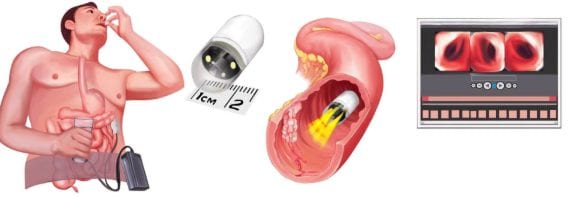
Motivation: Traditional endoscopy is an intrusive process that requires a long flexible tube to be inserted through the patient’s mouth while sedated. Only images of the upper 4 feet of stomach, colon, and rectum can be captured, leaving out the remaining 20 feet of small intestines uncaptured. Wireless capsule endoscopy (WCE) offers a non-intrusive, efficient and effective alternative to traditional endoscopy.
Background: In wireless capsule endoscopy (WCE), an ingestible pill shaped capsule with imaging capabilities, LED’s, batteries, wireless sensors, and antennas is swallowed by the patient. The capsule is designed to send thousands of images in real time as it travels through the gastrointestinal (GI) tract, and sends these images to an external receiver placed on or around the human body [2].
Challenge: The main difference between implant nodes and ingestible medical devices is that the position of an implant node is typically fixed inside the body, i.e., the location does not change with respect to the receiver. In WCE, the location of the capsule constantly changes with respect to the receiver as the it travels through the GI tract. This makes accurate channel characterization between the transmitting and receiving antennas very challenging.
Research Statement: In this research, we numerically investigate the radiation pattern and specific absorption rate (SAR) of a spiral antenna capsule as it travels through the GI tract. We also investigate the in-body channel characteristics between the capsule and a body surface node as well as between the capsule and an external node. We are currently performing the simulations using the finite element method based commercial software, high frequency structure simulator (HFSS) and the ANSYS human body model.
WBAN in Emergency Response
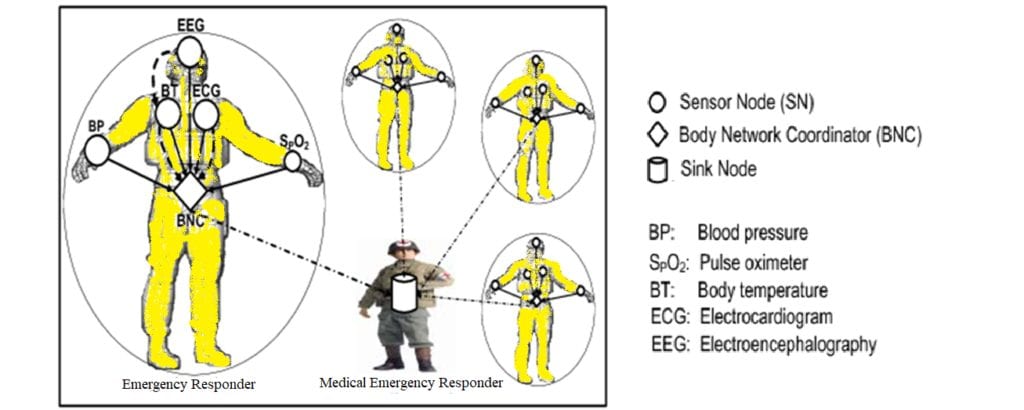
Wireless Body Area Networks can be instrumental in reducing the probability of injury, providing improved monitoring and timely care in case of an injury for the emergency responders and the public. Networking architectures for this application is an ongoing research.
Internet of Humans and Things
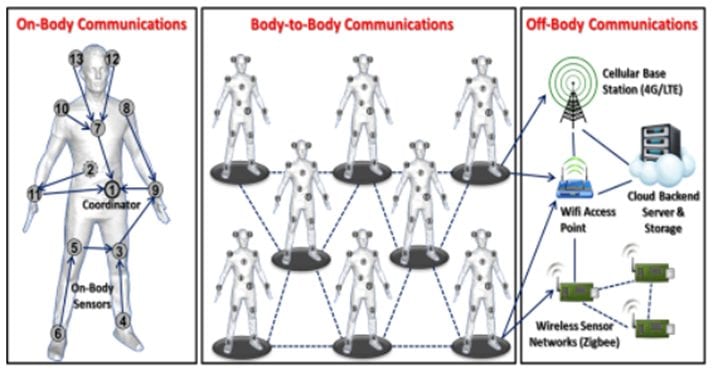
Wireless Body Area Networks are a strong enabler of the internet of humans and things, a network that facilitates data transfer and information sharing between humans as well as the remote monitoring and control of devices. Communication protocols, data security and privacy is an ongoing research.
REFERENCES
[1] IEEE Standard for local and metropolitan area networks, IEEE 802.15.16-2012 -Part 15.6: wireless body area networks, 2012.
[2] Lee, S. H., Lee, J., Yoon, Y. J., Park, S., C. Cheon, Kim, J., Nam, S.: A wideband spiral antenna for ingestible capsule endoscope systems: experimental results in a human phantom and a pig. IEEE Transactions on Biomedical Engineering. 58(6), 1734–1741, 2011.
[3] A. Conway, W. G. Scanlon, C. Orlenius and C. Walker, “In situ measurement of UHF wearable antenna radiation efficiency using reverberation chamber,” IEEE Antennas and Wireless Propagation Letters, vol. 7, pp. 271-274, 2008.
[4] FCC policy on human exposure to radio frequency electromagnetic fields, https://www.fcc.gov/general/radio-frequency-safety-0
[5] K. Yazdandoost and K. Sayrafian-Pour, “Channel Model for Body Area Network (BAN),” doc: IEEE 802.15-08-0780-12-0006, November 2010.
[6] T. Aoyagi, J. Takada, K. Takizawa, N. Katayama, T. Kobayashi, K. Y. Yazadandoost, H. Li and R. Kohno, “Channel Models for Wearable and Implantable WBANs,” doc: IEEE 802.15-08-0416-02-0006, July 2008.
[7] H. Viittala, M. Hämäläinen, J. Iinatti and A. Taparugssanagorn, “Different Experimental WBAN Channel Models and IEEE802.15.6 models: Comparison and Effects,” in 2009 2nd International Symposium on Applied Sciences in Biomedical and Communication Technologies, pp.1-5, 2009.
[8] M. ElHelbawy, Wireless Body Area Networks: UWB Antenna Design and Channel Modeling, in 2020 International Applied Computational Electromagnetics Society (ACES) Symposium, July 27-31, 2020.
[9] D. B. Arbia, M. M. Alam,Y. L. Moullec and E. B. Hamida, “Communication Challenges in on-Body and Body-to-Body Wearable Wireless Networks – A Connectivity Perspective”, Technologies 2017, 5(3), 43, 2017.https://doi.org/10.3390/technologies5030043
[10] E. E. Egbogah and A. O. Fapojuwo, “Achieving Energy Efficient Transmission in Wireless Body Area Networks for the Physiological Monitoring of Military Soldiers,” MILCOM 2013 – 2013 IEEE Military Communications Conference, San Diego, CA, pp. 1371-1376, 2013.
[11] L. Hanlen, D. Smith, A. Boulis, B. Gilbert, V. Chaganti, L. Craven, D. Fang, T. Lamahewa, D. Lewis, D. Miniutti, O. Nagy, D. Rodda, K. Sithamparanathan, Y. Tselishchev, and A. Zhang, “Wireless body-area-networks : toward a wearable intranet,” in National ICT Australia, 2011.
Results
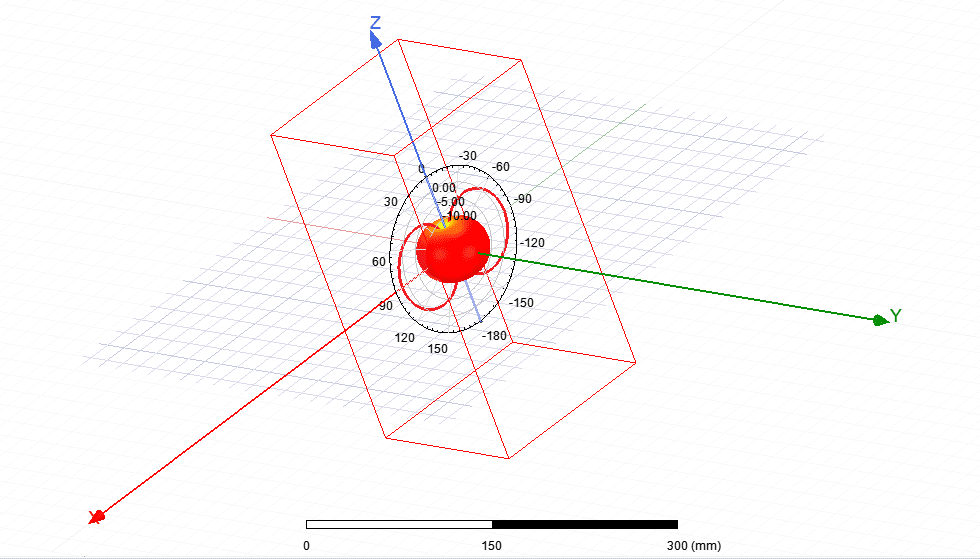
Radiation Pattern of a dipole antenna modeled in HFSS
Results
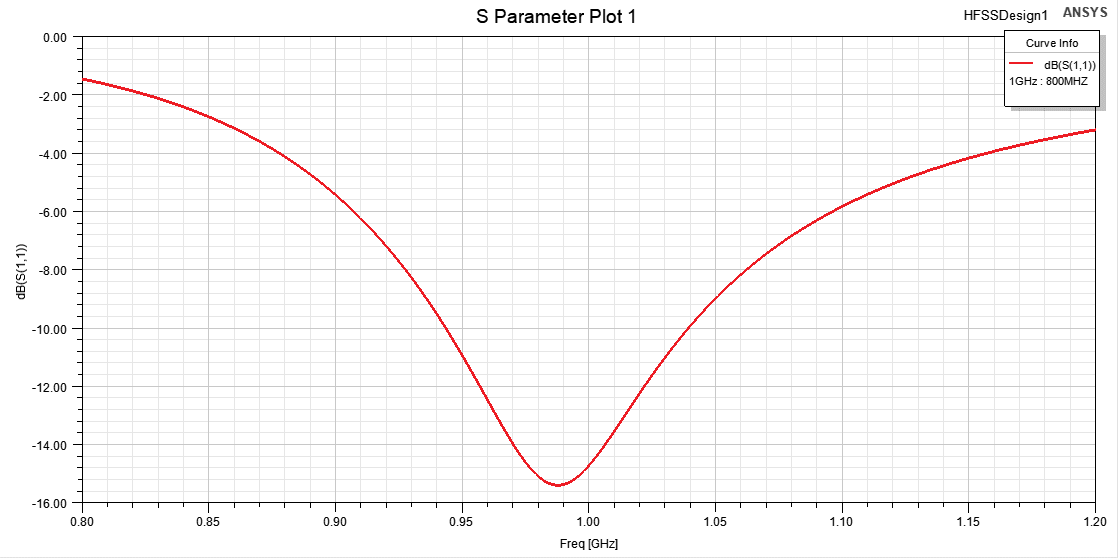
S11 Parameter Graph [dB] vs [Hz]
Results
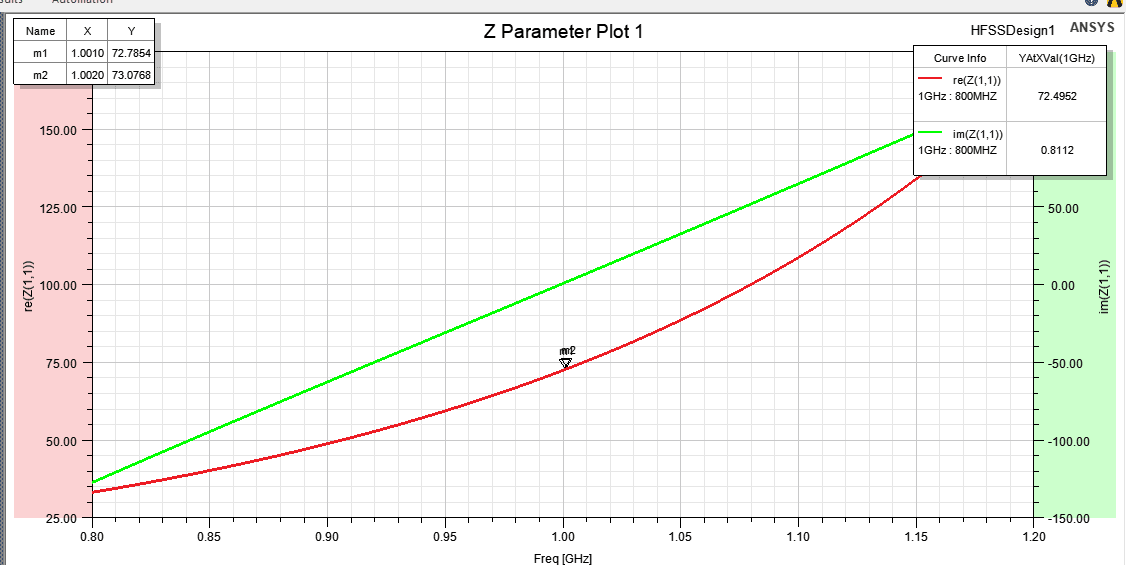
Z Parameter Graph [dB] vs [Hz]

